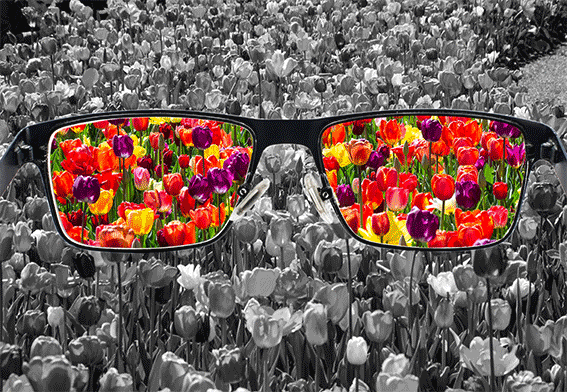
Have you ever wondered if the colours you see are the same as what others perceive? It turns out that the world of colour perception is a complex and fascinating one. While most of us take for granted that we all see the same colours, the truth is that some people see different colours, and others don’t see all the colours that exist.
The Basics of Colour Perception
To understand why some people see different colours, it’s important to start with the basics of colour perception. Our eyes contain specialized cells called cones that are responsible for detecting and interpreting different wavelengths of light. These cones are sensitive to three primary colours: red, green, and blue. By combining the signals from these cones, our brain creates the full spectrum of colours that we see in the world around us.
Colour Blindness: Seeing the World Differently
Colour blindness, also known as colour vision deficiency, is a condition where individuals have difficulty distinguishing between certain colours or cannot perceive them at all. The most common type of colour blindness is red-green colour blindness, which affects a significant portion of the population, especially men.
In red-green colour blindness, the cones responsible for detecting red and green light overlap in their sensitivity, making it challenging to differentiate between these two colours. As a result, individuals with red-green colour blindness might see reds and greens as various shades of brown or gray.
Seeing More Colours: Tetrachromacy
On the flip side, some people are believed to have an extended range of colour perception called tetrachromacy. While most of us have three types of cones, tetrachromats have an extra type, allowing them to perceive a broader spectrum of colours.
This phenomenon has been studied extensively in women, as the gene for tetrachromacy is located on the X chromosome. Some researchers believe that a small percentage of women might be tetrachromats, but it’s challenging to identify them because they might not even be aware of their unique ability.
The Cultural and Individual Aspects of Colour Perception
Beyond the biological aspects, culture and personal experiences can also influence how we perceive and interpret colours. Different cultures may attach various meanings and emotions to colours, leading individuals from those cultures to perceive them differently. Likewise, personal experiences and associations can affect how we see and feel about certain colours.
Conclusion: Embracing the Diversity of Colour Perception
In the world of colour perception, there is a wide spectrum of experiences. Some people see different colours due to conditions like colour blindness, while others may possess a heightened ability to perceive an extended range of colours. Culture and personal experiences also play a significant role in shaping our individual perceptions of colour.
Understanding these differences in colour perception can lead to a greater appreciation for the diversity of human experiences. Rather than taking our shared reality of colour for granted, we should celebrate the unique ways in which each individual sees the world and the beauty that comes with it. After all, it’s the richness of these diverse perspectives that makes our world all the more colourful.
